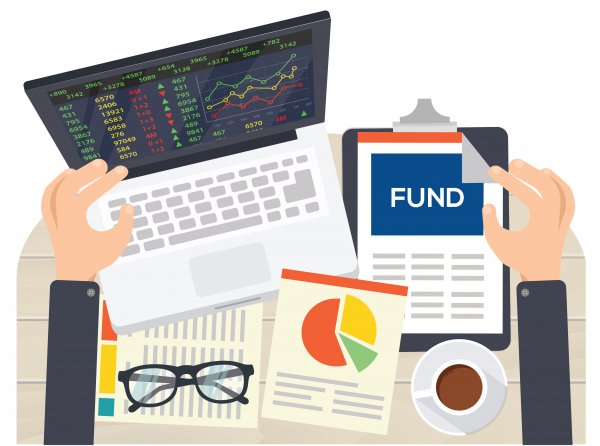The National Renewal Fund is a sovereign fund created to manage the surplus of energy produced by the People’s Collective of Energy Producers.
Composition of Fund
The fund started with an initial capital composed of the same 60% of shares from each company and had another 10% contributed by private investors and 40% contributed by the State as a guarantee for loans. This money was put aside exclusively for projects which would expand and improve infrastructure, including power plants and transmission lines, university programs dedicated to renewable energies and other sources, R&D in technologies related to renewables and other mind-changing materials, etc.
The first managers took advantage of this expansion to create several subsidiaries targeted at specific industries such as “Renewable Energies,” “Electric Vehicles,” “Organic Foods,” or “Renewable Materials.” These subsidiaries are only financed with the profits of their corresponding parent company.
State Encouraged Private Investors:
Through subsidies and tax benefits, the State encouraged private investors to buy shares in all companies related to renewables. Because most renewable power plants were being built with state money or because most research was being done by or for state-funded universities, this policy had no negative consequences for any industry. The initial capital of 60% in each company is now distributed among four companies where the State holds 25% of the common stock, while another four companies are 100% owned by private investors.
We estimated that in two years from opening the fund, it would have a value greater than three times its initial capital, and in 5 years, it would have a value greater than 18 times its original value.
National Renewal Fund Financed By A Surplus Of Energy Company:
The fund does not require any contribution from the Public Treasury and is financed exclusively by the surplus of energy production at each company. This surplus is determined by national law, taking into account the power required during peak hours of usage over an average year.
Read More: What Is Investment Management Agreement? Everything You Need To Know
Purpose of national renewal fund:
The national renewal fund is a global private equity fund whose purpose is to “build relations between peoples and help serve each country’s economic, environmental and social interests.” It was established in 2001. The National Renewal Fund’s investments focus on renewable energy, sustainable development, science & technology research, and human capital.
Creation of a Global Energy Project:
Creating a global energy project network will reduce by half the ecological footprint left by humankind through this exhaustive exploitation of fossil fuels.
Education for children:
All children have a right to an education that allows them to fulfill their full potential. To realize this universal principle, an investment that represents less than 2% of global GDP (Gross Domestic Product) will be necessary.
This level of financing could allow every child between the ages of six and twelve to attend school and every worker between the ages of sixteen and fifty-five to read and write.
Creation Of A Global Energy Project Improves Living Conditions Of People:
These figures speak for themselves. The problem is international: how can we improve living conditions globally? By seeking standard solutions, respecting cultural diversity, and using effective technologies that help solve poverty, water scarcity, or climate change.
To do this, we need education, investments in renewable energy technology research & development (R&D), respect for human rights, promotion of international cooperation & dialogue, and a global project network capable of reducing 50% of the ecological footprint left by humankind on earth. That’s why we created the National Renewal Fund (NRF). We want to use our private capital to promote development in the areas indicated above.
The NRF comprises a unique blend of partners from various fields, each contributing their strengths and experiences. These groups work together on investment projects, linking private companies with local communities, governments, and non-governmental organizations (NGO’s) to contribute to sustainable development worldwide. By promoting development in this way, we call on all those who wish to work together for a better global future.
Advantages of National Renewal Fund:
- National renewal fund is a particular global project to promote sustainable development
- Reduce the ecological footprint left by humankind on earth by 50%
- Protect biodiversity, reduce co2 emissions
- Protect children’s right to education; teach everyone to read and write
- Promote international cooperation & dialogue; respect for human rights; nurture cultural diversity; support science & technology research and development
- Reduce poverty; improve living conditions of people; reduce water scarcity
- Network capable of reducing 50% of the ecological footprint left by humankind on earth.
- Promote sustainable development worldwide
Disadvantages of National Renewal Funds
Many governments offer their citizens the option to invest in an interest-bearing savings account/ investment fund that provides a fixed return, usually paid once yearly. These are often called ‘national renewal funds’ or similar. The idea is to allow the citizenry to make small regular investments over years and decades, which will provide a significant lump sum at some point in the future, which can be used for various national projects.
There are several disadvantages of national renewal funds:
- Citizens would not have access to their money before it is paid out as a lump sum at some point in the future. This means that they may never get back any capital that they invested. For example, if an individual invested £10,000 in the national renewal fund and worth £100,000 when they finally received it at age 70. Still, by that time, inflation had eroded its value to only £60,000. They would have lost a third of their original investment.
- Secondly, citizens would be unable to choose how their money is invested. They would have no control over issues such as tax rates or how the money is spent. The government might invest this money in harmful industries to the environment, damaging it for future generations (e.g., coal and oil-burning power stations).
- It would also be difficult to predict the total amount of income raised from the national renewal fund. For example, plans to build a new airport or motorway could turn out to be far too expensive and may require not only the initial capital but also several further top-ups.
- This type of savings would increase inequality between countries as wealthier countries would have more money available for investment than poorer countries.
- Remember, national renewal funds are only paid out to citizens at some point in the future, so they cannot be used for immediate projects or emergencies.
- There is no guarantee that a national renewal fund will lead to any significant improvement in infrastructure or living standards of citizens – it could just lead to corruption and crony capitalism.
- How would citizens who have saved in national renewal funds be compensated if the government decides to abandon or significantly amend one of its projects? For example, many families had to sell their homes at a loss when London’s 2012 Olympics plans were abandoned.
- National renewal funds are not always based on trust – sometimes you have to pay a small premium for them, and this money is used to compensate citizens if a project does not go ahead.

Conclusion
Government resolution set the plans of The National Renewal Fund (NRF) in 1992. They provide proper operations in a specific period. The duration of this period is almost ten years. Government resolution is for the welfare of the people.
FAQS
The National Renewal Fund (NRF) is a new fund set up in January 2012 to help meet the costs associated with Hurricane Sandy. It is distinct from FEMA’s Disaster Relief Fund (DRF) and other disaster accounts used to provide disaster assistance and is not limited to the DRF and disaster accounts. The NRF will help state, tribal, and local governments with disaster recovery and federal agencies to address unmet needs from Hurricane Sandy.
The NRF is a new fund, so that that information may be available from a variety of sources. The best place to begin is with the NRF web-page. That site has information about the NRF and will be updated as new information comes available. Anyone with questions or needing additional NRF resources should contact their FEMA Regional Office.
Federal, State, tribal and local governments and certain private non-profits are eligible under the NRF. Qualified applicants may apply for reimbursement of costs they have incurred during a declared disaster. These costs qualify as either necessary expenses related directly to the impact of a federally declared disaster or public assistance eligible work related to the disaster.
NRF can reimburse eligible applicants through two different accounts: Account 1 and Account 2. These designations indicate whether an applicant is seeking reimbursement for necessary expenses related directly to the impact of a federally declared disaster or for public assistance eligible work related to the disaster.




